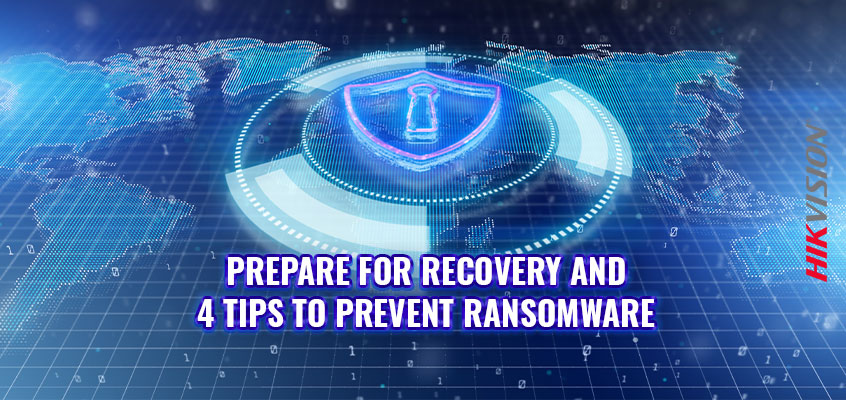Ransomware Attacks: How to Prepare for Recovery and 4 Tips to Prevent Ransomware

Ransomware attacks are still a major problem within online cybersecurity today. Hikvision wants to keep our customers up-to-date on the latest information about ransomware attacks and give you tips on how to prevent them.
This recent Canadian Security Magazine article discusses how to prepare for cyberattack recovery if your organization should happen to be attacked. In 2022, nearly 60% of Canadian organizations were hit by a ransomware attack compromising hundreds of thousands of records. According to Sophos, the average bill for resolving a ransomware attack, including downtime, network cost, and lost opportunity is nearly $1.85 million. This can be devastating to some organizations. In a high-stress situation like these, it’s easy to let certain things fall through the cracks. However, with a recovery plan put in place in advance, businesses can ensure a smoother road to recovery.
According to Canadian Security Magazine, the first step in preparing for ransomware attack recovery is to put a plan in place. This includes having clear email and internet policies and leaders being trained on how to respond if a cyberattack occurs. The next step is the reduce the attack’s impact. This means understanding what your cyber-insurance covers, what is needed to ensure your coverage, and clearly outlining your organization’s data retention and deletion policies. Lastly, recover after the breach by deciding whether the ransom will be paid. Also, work with a forensics expert to learn what types of data were compromised and keep an open line of communication between everyone involved in the recovery effort.
Hikvision has some tips to avoid ransomware attacks, though it is still best to have a plan in place. These four tips to prevent ransomware include:
- Data Backup: The first and most important thing that you can do to prevent ransomware is back up your devices. For more details, check out the Hikvision article on data backups here.
- Patching: Patches are updates to a computer program or its data that improve or fix its performance. By installing patches as soon as they are released, or by setting automatic patching where available, you can keep your system up to date and reduce risk.
- Multi-Factor Authentication (MFA): Enable MFA where available to better protect your accounts and devices. This also protects against credential stuffing attacks.
- Use a Password Manager: Using a password management tool can help you create strong, unique passwords for every account. A password manager is a software tool that stores all of your passwords in an encrypted file so that you, and no one else, have very easy access to them, helping minimize security concerns.
Check out our online cybersecurity page for more information about ransomware attacks and general cybersecurity information.
